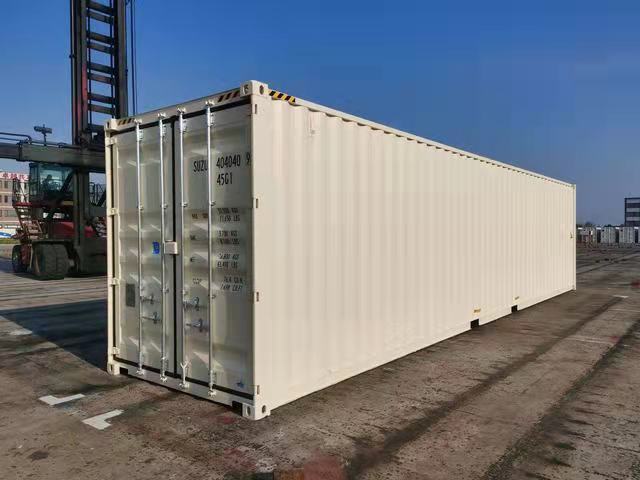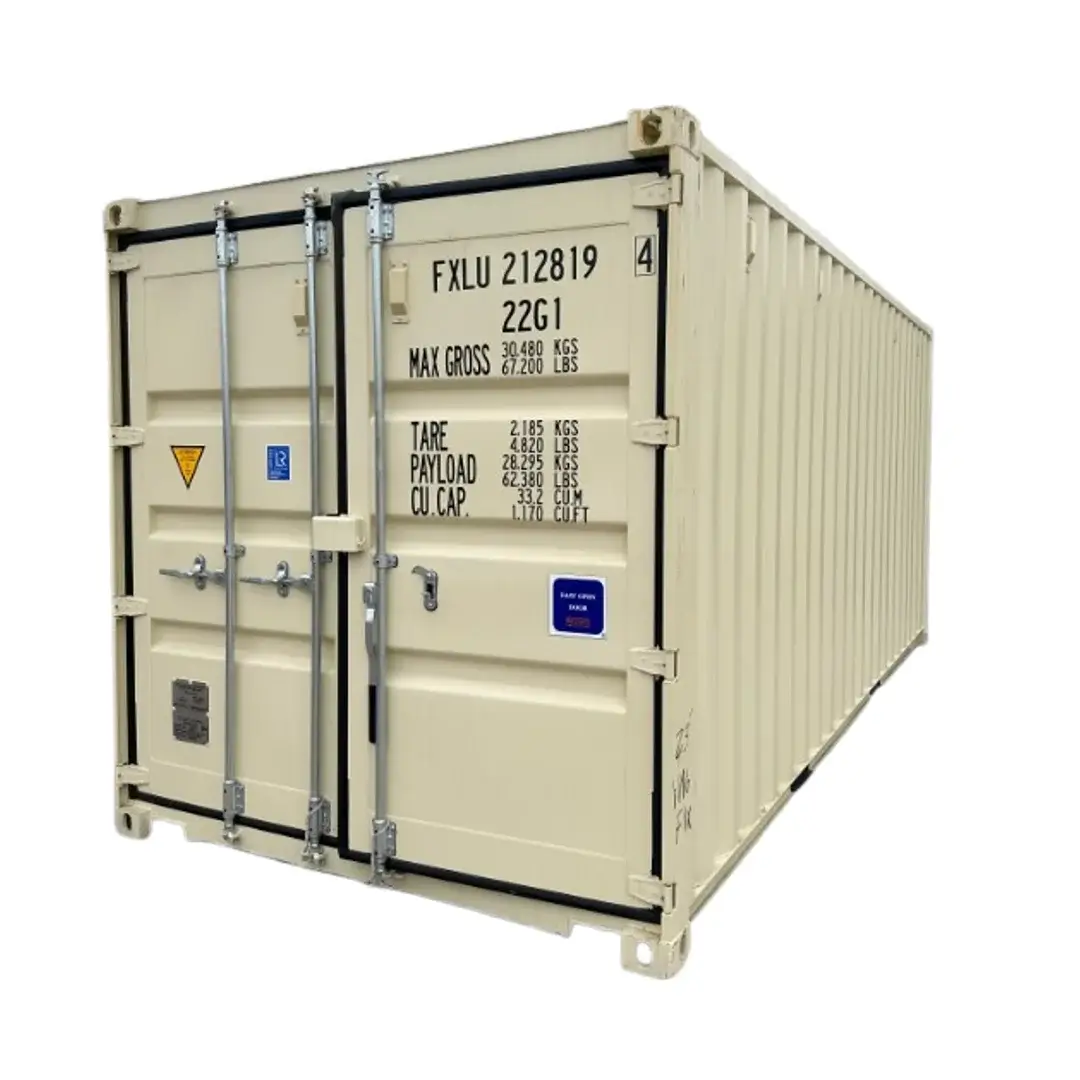The Ultimate Overview to Selecting the Right Delivery Container for Your Demands
When it involves picking the appropriate delivery container, understanding your specific demands is vital. You'll intend to consider variables like dimension, kind, and material to ensure you make the very best option. From typical dimensions to specialized options, there's a lot to discover. Plus, budgeting for both the container and any type of adjustments can make a big difference. Let's break down the crucial aspects to help you discover the best suitable for your requirements.
Comprehending Delivery Container Sizes
When you're selecting a shipping container, understanding the various sizes available is critical for making the right decision. Shipping containers generally are available in conventional lengths of 20 and 40 feet, but you'll also discover other dimensions. Recognizing the dimension you require depends on what you prepare to shop or transport.If you're moving smaller things, a 20-foot container could be suitable, while larger deliveries frequently need a 40-foot container. The height can additionally differ; high dice containers use additional upright space, which can be valuable for taller goods.Before making a decision, gauge your freight, and think about exactly how much space you'll require for filling and dumping. Always variable in prospective future needs-- going with a slightly bigger container may conserve you problem down the line. Inevitably, choosing the ideal dimension will enhance efficiency and assure your items are safe throughout transportation
Types of Delivery Containers Available
There are numerous kinds of shipping containers available, each created for certain objectives and cargo needs. The conventional dry container is versatile, best for basic cargo. If you're shipping perishable products, take into consideration a cooled container, which preserves a regulated temperature. For large products, high dice containers provide extra elevation, suiting taller loads.If you require to move hefty machinery or devices, flat shelf containers supply a strong base without wall surfaces. Open-top containers permit for easy loading of high freight, with a removable tarp covering for defense. If you're trying to find adaptability, consider a retractable container that can be quickly stored when not in use.Lastly, specialized containers like container containers are made use of for fluids, while vented containers are developed for bulk freight that needs ventilation. Knowing your freight kind will assist you select the appropriate container to fulfill your delivery requires successfully.
Product Considerations for Durability
When choosing a delivery container, the product plays a vital role in its toughness. You'll want to evaluate the advantages of steel versus light weight aluminum, particularly regarding rust resistance. Recognizing these variables can assist you make an extra informed choice for your shipping requires.
Steel vs. Light weight aluminum Containers
Just how do you choose in between steel and light weight aluminum containers for your delivery needs? Begin by thinking about longevity. Steel containers are durable and deal exceptional stamina, making them suitable for hefty tons and severe conditions. They resist damage from impacts and are frequently cheaper, which can be a major factor for budget-conscious buyers.On the various other hand, aluminum containers are light-weight, which can conserve you on delivery costs. They're less complicated to steer and are a great choice if you require to transfer goods often. Aluminum is normally a lot more expensive and less robust than steel. Evaluate your specific demands thoroughly, consisting of weight, price, and the kind of freight you'll be shipping, to make the appropriate option for your situation.
Corrosion Resistance Variables
Choosing the best material doesn't simply entail weight and price; rust resistance plays a significant function in durability. When selecting a delivery container, take into consideration the atmosphere it'll face. Steel containers, while strong, can corrosion otherwise appropriately treated. Look for alternatives with safety layers or galvanization to boost their life expectancy. Light weight aluminum, on the other hand, provides all-natural corrosion resistance, making it optimal for seaside locations or humid problems. It can be extra expensive. Furthermore, evaluate the container's use-- if it'll be revealed to chemicals or rough climate, prioritize materials that can hold up against these problems. Spending in a corrosion-resistant container currently can conserve you from pricey repair services or replacements down the New Shipping Container 40' x 8' x 9’6" line. Choose carefully for long-lasting advantages.
Alterations and Customization Options
Delivering containers aren't simply for transporting items; they can be transformed to fulfill your certain requirements through various alterations and personalization alternatives. You can convert a conventional container right into a relaxing workplace, a temporary retail store, and even a personal health club. The possibilities are almost endless.Think about adding windows, insulation, or ventilation to enhance convenience. You could additionally consider electrical circuitry, pipes, or also customized shelving to improve capability. If protection's a worry, enhanced locks can give tranquility of mind.For aesthetic allure, you can paint the container or add an one-of-a-kind style to make it stick out. Do not ignore flooring options-- whether you desire durable plywood or something more sophisticated, it can elevate the space.Ultimately, tailoring your delivery container to fit your requirements can boost use and create a distinct environment that shows your style.
Evaluating Your Transportation Requirements
When it concerns utilizing your modified delivery container, understanding your transport needs is key. Begin by establishing what you'll be delivery-- whether it's heavy equipment, retail products, or personal items. Each kind of cargo has various requirements concerning dimension, weight, and accessibility.Next, think about the distance and setting of transportation. Are you delivering locally, nationally, or worldwide? This influences the container's design and capability. If you're using vehicles, assure your container fits standard measurements for easy loading and unloading.Additionally, consider transportation conditions. Will your items need unique defense from climate or temperature level fluctuations? If so, you might require insulation or air flow functions in your container.Lastly, analyze just how typically you'll be carrying items. Frequent deliveries may call for a more resilient and versatile container to satisfy ongoing needs. By dealing with these elements, you'll be well-prepared to pick the ideal delivery container for your requirements.
Budgeting for Your Shipping Container
Setting an allocate your shipping container is necessary for making certain a smooth investing in process. Initially, establish just how much you can manage to invest. Costs can vary considerably based on size, condition, and type. New containers usually cost more, yet used ones can supply substantial savings.Next, take into consideration any extra prices you may sustain, such as transport charges, delivery charges, and alterations. If you intend to customize the container, aspect in those expenses also. Study various suppliers to compare costs and discover the most effective deal that meets your needs.Don' t neglect to include any permits or policies that may use to your acquisition and usage of the container. By clearly detailing your budget plan, you'll be better prepared to make informed decisions, guaranteeing you get the appropriate container without breaking the bank.
Upkeep and Care for Longevity
To assure your shipping container lasts for years, regular maintenance is essential. Begin by evaluating the exterior for corrosion, dents, and resource damages. If you identify any problems, address them promptly to protect against further deterioration. Tidy the container periodically, both throughout, to eliminate dust, debris, and moisture that can result in corrosion.Ensure the doors seal appropriately and lubricate the hinges to avoid rust and sticking. If you're using the container for storage, take into consideration adding air flow to decrease moisture and mold development. For added security, apply a rust-inhibiting paint or sealer annually.If your container's situated in a severe setting, like coastal areas, you could need to increase maintenance regularity. Watch on the floor covering, too; any signs navigate here of wear should be repaired today. With these basic actions, you'll expand the life of your shipping container significantly.
Often Asked Questions
Just how Do I Find a Reliable Delivery Container Supplier?
To find a reliable delivery container provider, begin by researching on-line testimonials, requesting for suggestions from good friends or industry calls, and contrasting costs. Always check their credentials and guarantee they supply quality containers that fulfill your demands.

Can I Lease a Delivery Container Rather Than Buying?
Yes, you can absolutely lease a shipping container instead of buying one. Many providers use rental alternatives, which can conserve you money and provide adaptability if you just require it for a brief duration.
What Permits Are Needed for Container Placement?

Are Delivery Containers Weatherproof and Appropriate for Outdoor Storage?
Yes, delivering containers are typically weatherproof, developed to hold up against extreme conditions. Their robust building and construction maintains your products safe and secure and completely dry, making them suitable for exterior storage space. Simply assure proper air flow to avoid moisture build-up inside.
How Do I Deliver a Shipping Container When Purchased?

Comments on “Where to Shop New Shipping Container 40 x 8 x 9.6 for Versatile Event Setups”